- Home
- Annie Proulx
Bird Cloud Page 7
Bird Cloud Read online
Page 7
And my own Thing Which Cannot Be Explained was how an entire year went by after we bought the Bird Cloud property with only three miles of fence, a half-mile power line and a well of alkaline water to show for it. I was slow to learn that delays and long waits are part of building.
CHAPTER 5
The James Gang
2004–2005
The year 2004 rolled on like a river stone traveling with the current despite my frustration at not having a builder’s commitment, or an idea of cost. Everything seemed to be floating and I was on the road constantly, driving over to Saratoga to meet with Deryl James and Dave Quitter or to the county seat for one permit or another, or to Fort Collins, Colorado, for vehicle maintenance, or to Denver to visit the dentists. I have terrible teeth and much of my time and money goes into desperate hours getting implants and associated fixes. I am the perennial patient of several expensive dental experts. What is the collective noun for dentists? A crown of dentists? Or a brace of dentists? A pain of dentists is more fitting. There were many long days spent driving tensely to Denver, then back with throbbing jaws. And because I was working on a book about the Red Desert, there were camping trips into the Haystacks, to old Sulfur Springs, to Butch Cassidy’s cabin, to Adobe Town, to Maggie Baggs’s Nipple, to the Boar’s Tusk, to many unnamed places, including the turnoff where grew several yellow prince’s plumes (Stanleya pinnata, a member of the mustard family), indicators of selenium in the soil, a few miles beyond a favorite hillside packed with hundreds of fossilized stromatolites. And on the slope behind the prince’s plumes, dramatically bisected by a fault, I found a tiny fossil trilobite.
The Red Desert is considered by most Wyoming people to be a six-thousand-square-mile chunk of empty and almost worthless public land. The area actually belongs to private individuals, the state of Wyoming and the Bureau of Land Management. Immigrants trekking to Oregon despised and feared it as a waterless desert, but nineteenth-century sheepherders from California discovered it was a good place to over-winter. Sheep fattened on the nutritious saltbush and found enough water. In recent years extensive oil and gas exploration and increased cow grazing have changed the ecology of this once-wild place. Less than 1 percent of the area is managed for wildlife habitat protection. Where early travelers saw sharp-tailed grouse, bison, bighorn sheep, grizzly bears, numerous beaver and even wolverines, today they see dust, feral horses, and noxious weeds including cheatgrass, halogeton and Russian thistle.
In 2004 I made two trips to Yellowstone for classes on waterfowl identification and raptors. Although it was only mid-September when the raptor class came up I couldn’t get into the park through Beartooth Pass at the northeast entrance—it was already snowed in. Too bad. That was the best way into the park to reach the wildlife classes usually held at the old buffalo corral area in the Lamar Valley, and it avoided bear jams, those impassable dams of cars stopped anywhere so that the occupants could leap out and take wildlife photographs. The approach road ran through the stunningly beautiful Chief Joseph Highway and into wild Cooke City, a ragged town clamped onto the base of a steep peak, a snowmobile and ultrafreak town inhabited by proudly eccentric characters.
Living and traveling around the mountain states I learned the approximate days all the passes close and open. The pass separating Centennial and Saratoga in the Medicine Bow range was closed from late October until Memorial Day—seven or more long months. In summer the pass cut the trip to about fifty-five miles. On the winter routes it was more than a hundred miles. The worst road was I-80, a tussle with big trucks, black ice and high winds. The southern route down through Colorado on relatively empty but long and twisty roads seemed interminable. On this road I saw a strange accident; a cattle truck had somehow turned over and neighbor ranchers were rounding up the survivors. I could only think of the wretched cows swaying along in queasy, jolting half-light, then suddenly a lurch and a terrific violence as the world turned upside down.
On a very warm, golden October day Gillis came for a visit and we went over the pass to check out the property. The place was ineffably beautiful, the cottonwoods a deep amber color. We walked around, drove to the east end in the bruiser SUV that I used for trips into the Red Desert, fished a little, sketched. We saw deer, a golden eagle, two bald eagles, two or three meadowlarks, an assortment of northern harriers. Gillis noticed the resident mink with a mouse in its jaws running along the bottom buck fence rail. In the distance we heard an avocet. As we were leaving, just before dusk, we noticed a large black porcupine in a cottonwood a few feet away from the fire ring. “It may have designs on Deryl’s trees. It’s good they’re fenced,” I said. Each tree stood within a circle of sheep fence to keep deer from browsing it. I didn’t think porcupines could get through, but I soon found out they slipped in like greased eels and were serious tree killers. That was the last trip of 2004 to Bird Cloud. Gillis headed back to Santa Fe and I settled down for the winter in Centennial. I only made one or two trips to Bird Cloud over the next six months.
In January of 2005 I was invited to attend the Game and Fish wildlife biologist Ron Lockwood’s elk-collaring project near Fossil Butte. The project was intended to help the Game and Fish Department learn specific information about elk populations and their whereabouts to answer claims by gas exploration companies that no elk were in such-and-such an area and therefore drill permits should be granted. The collar project would show how many elk went where.
The trap was a circular walled structure. The elk had been lulled into a false sense of security as the outer trapdoors were left open for months, the ground strewn with the finest alfalfa. After days of suspicious sniffing and circling the elk began to edge in at night, found they were out of the wind, discovered the nutritious hay. By January they were casually sauntering in, the shelter and the hay taken for granted, no doubt provided by some beneficent elk spirit. Then one morning before daylight while they were gobbling hay, Ron and his son Sam closed the outer doors, imprisoning the elk.
The night I arrived it was very cold, almost twenty below zero. In the morning Ron, still in his pajamas, stopped by my motel to make sure that I was up for the project and that my vehicle would start. My vehicle did not start and Ron said he would come back for me. He returned dressed in the heavy Carhartt coveralls ranchers wear on bitter days. Although Ron had a house and family, his truck was his real home. Bob, his Aussie heeler, usually sat in the passenger seat. The windshield sported a star fracture. An overhead rack carried two rifles, one with spotting scope. The rack had been installed in a hurry and there was no dome light. On the dashboard were two elk spike horns, a length of wire, a dirty white cowboy hat, a mesh Game and Fish cap, three pairs of gloves, a radio, various envelopes and forms, a calendar for the wrong month, an assortment of bumper stickers (save the red desert: 50,000 antelope can’t be wrong, wage peace, life is good, crack kills). In and around the front seat were hanks of baling twine and many pieces of clothing suitable for trips to Antarctica or Death Valley. We went to the Fossil Butte museum where Ron’s team waited. As we left the warm museum a pygmy rabbit sprang from under a clump of rabbitbrush.
“Looks like snow,” someone said in a joking tone.
We headed to the elk-filled corral. At the south end of this corral there was a closed-off smaller corral with equally high walls, and beyond it a long compartmented chute that could accommodate four animals. Inside the main corral Ron and Sam worked the elk one by one into the second corral and from there, pressed each one into the chute. The elk were furious and frightened. The team members stood along the sides of the chute compartments, each exhalation of elk and humans sending plumes of steam into the bitter air. The wind began to rise and bare fingers went numb in seconds. It started snowing. Hard. The air shuddered with volant snow like bead curtains in an earthquake. One person drew blood samples, another put the vials in a case, another put in left and right ear tags, checked teeth, another measured the neck, someone noted the data on a clipboard, another put an electronic collar on t
he unwilling elk, and two burly guys at the end of the chute opened a door and let the now thoroughly terrified elk out. The animals sprang away with prodigious leaps, plunging through deep drifts in a spray of snow and ice particles. In the whiteout the world fell away until there was nothing but panting elk and purple-faced humans. It was intensely cold, the snow thickened and the wind roared. It hurt to talk. After three or four hours it was over. One female elk, too frantic with fear to bear the experience, had tried to leap over the fifteen-foot trap wall and broken her leg. Her life ended there, a victim of human science. Ron gave me two elk antlers and they, supplemented with others from a Texas elk preserve, became the handles on Bird Cloud’s cabinets. I thought antlers had to be the world’s original handles; they were handsome, fit the human hand very well and were more comfortable to use than any wood, plastic or metal handle yet invented. Prehistoric Indian knives were sometimes hafted with antler. A few days after the elk roundup I was in New York where the only corrals were at street corners, waiting for the light to change.
The winter of 2004 through 2005 was good for cross-country skiing in the Medicine Bow range and I went out every day I could manage it, snowstorms or not, for the frigid day at the elk corral had made anything short of a blizzard seem petty. But people do have accidents in the forest, especially people who go out alone as I always did. One summer, walking on a marked trail I was startled to hear gunfire and the smack of a bullet into a nearby tree. At the bottom of the trail a carload of yahoos with Nebraska plates peeled out. And on a glittering Christmas Day a man on a snowmobile drove over a snow-covered stream. He went through the snow and ice and into the water where his machine died. Wet and on foot he quickly lost his ability to think rationally, blundering on through the drifts, confused and terribly cold. Eventually he reached the strange stage in the process of freezing to death when the body feels hot and confined and in one of his final acts he tore off his clothes. His naked corpse started a rumor that he had been found by thieves, robbed and stripped of his garments.
As the spring of 2005 advanced, the snow slumped in the growing hours of sunlight, softening the top layer. During the night the temperature dropped below freezing and the good snow was imprisoned beneath a hard casing of ice, impossible to ski. Only in the deep forest where the sun’s melting rays could not ruin it did the snow stay loose. The Shiras moose shook their antlers in the willows. Rabbit and hare tracks were everywhere, as were the ancient signs of the changing season. In a few months the pass would reopen. In the meantime I went again to New York, back to Wyoming and then down to Taos and a few days later away to New York once more. In Taos I stopped at Garcia’s fine tile shop south of town and bought a Mexican talavera sink for Bird Cloud’s future downstairs powder room.
Once the pass opened and the roads dried it was time for camping trips into the Red Desert. I had one more visit to New York in May, but the problem of Bird Cloud loomed. We still did not have a builder.
I was bemoaning that fact to a Saratoga friend who gave me a strange look and said, “You know Gerald James, don’t you?”
“Of course. He helps Deryl and Dave with the landscaping.”
My friend snorted. “He’s the best damn builder in Carbon County, maybe in the state.”
“Gerald? Gerald is a builder?”
“Yeah, but he’s picky. He won’t take on just any job. But if you can get him he’s the best. Deryl and Dave work with him.”
That night I wrote a letter to Deryl, whom I knew better than Gerald, asking if the trio would consider the construction of Bird Cloud. There were a few days of silence and I imagined Gerald refusing anything short of a Taj Mahal replica or pleading other work. But they said yes, setting aside their own plans to work that year building a snowmobile lodge on the Continental Divide where they owned property.
Doug Ricketts, a friend and notable furniture designer in the Texas Panhandle, agreed to work with Harry and Gerald and make the kitchen cabinets and metalwork range hood. The stone countertops would come from Laramie, from a business owned by the wife of the real estate agent who handled the sale of Bird Cloud. Wyoming was that kind of place.
On July 25, Gerald and I signed a contract for the James Gang to build Bird Cloud. Gerald would have preferred just to shake hands, an old western bond of trust that has pretty much disappeared, but I do not lead a handshake life as my obligations and fealties to heirs, publisher, extended family are many and complex. I began to learn that Gerald was determinedly cheerful and sunny, extremely detail-oriented, a workaholic, a stickler for high-quality construction, incapable of cutting corners, the kind of person who lies awake at night fretting over imperfections, then rises in the dark and sets the difficulty right. The youngest of the brothers, he is extremely thin, has shoulder-length blond hair and resembles a remnant hippie or Russian ice skater. He liked to pretend he was still twenty-five years old and his agility and fearlessness supported the statement. Both he and Deryl were smokers who could not stop.
Events quickly went into high gear. Josh and Jason of Western Water Consulting came and established the hundred-year floodplain bench. Land along rivers is usually characterized by floodplain levels related to past submergence in times of high water. New construction is supposedly regulated by federal, state and local rules. The hundred-year flood level is the marker for construction permits. But of course, things can go awry. Just ask anyone from New Orleans. And in 2010 we had a hundred-year flood. The house stayed high and dry, but the river took many sections of buck fence.
Deryl and I went to Rawlins, the county seat, to plead the case before the Carbon County Planning Commission for a rezoning of the property which had been listed as agricultural land for more than a hundred years. It was approved and rezoned as agricultural-residential, in keeping with the slow but steady trend of protecting the river frontage from housing and business developments. Heavy grazing and cattle on the riverbanks had damaged the ecosystem over the years. From the time we bought the property we had had trouble with trespass cattle, especially one ranch’s red mountain-loving French Salers who made a steep path up the west end of the cliff to get to the nutritious sedge on top, and who waded up and down the river, climbing onto neighboring sections wherever grass and browse looked good to them.
In July the Gang moved their trailer south of the house construction site. On the phone Deryl said they would start construction the first Monday in August. At last.
Architect Harry Teague, who likes old metal as much as I do, designed the front and back entryways to be covered in rusted corrugated “tin.” The search was on for a source. Harry teased us with photographs of an old building in a Colorado town covered with the stuff. The James Gang found something closer to home, barn siding on a local ranch, and they spent some days taking down the old rusted metal and stockpiling it at Gerald’s shop.
Deryl convinced me that I would save a lot of money if I bought the Gang a secondhand Bobcat skid steer rather than paying to rent one. There just happened to be one for sale up in Casper, he said. I did buy it and Deryl immediately christened it “the puppy.” With it the James Gang dug the hole for the foundation, evened out, scraped and prepared the site for the slab, dug the septic tank hole and lines, dug trenches for water lines, made and repaired road and driveway. The week after we signed the contract I had to go to Newfoundland for a week.
While I was gone, Gerald, who had been going through the plans carefully, noted “utility room not large enough.” That is, not large enough for everything that had to fit into it. Two days later Harry and his project manager, Jim Petrie, came up from Aspen to mark the precise outline of the house on the ground for the slab and the location of the utilities which would need drains and electrical outlets. That was the moment to have changed the plans enough so that the mechanical room could be enlarged and have its own detached slab. Gerald reportedly brought the subject up in a quiet voice, but the plans stayed the same.
For the slab, no one would do except Catfish, a Saratoga concr
ete expert with standards high enough to satisfy Gerald. Catfish was affable, sported 1970s-style curly sideburns, looked to be around forty. His assistant was Jake in a red shirt that could be seen a mile distant. Thirteen loads of gravel came in for the subfoundation pad and twenty loads for the driveway and new entrance road Deryl wanted to put in. After weather delays, there was another delay because Catfish’s current client’s half-basement job suddenly changed to a full-basement job, and then there was a hole in the Rawlins prison wall that had to be repaired immediately. The final stage of my pour was the library at the west end. When I got there Catfish was power-troweling the still-damp concrete and Jake was taking down the forms on the earlier sections which were hard and flat, flaring off light like a grey lake. Now it was possible to see the real shape of the house with its odd inlets and archipelagos, possible to get a sense of the interior space. It was a great moment. The house was really going to be built.
The work on the foundation continued for six weeks, fussy and exacting. Catfish signed his name with a flourish on the first slab. The second slab was going to be the underlay for the concrete floor. I resisted Jim’s siren songs about the beauty of concrete countertops in the kitchen. Yes, they could be stained any color and would be ground to a satin-smooth surface and so forth, but in fact they need more care than stone counters, and making them is tricky. When one is slopping olive oil and sauces around, worries about the countertop are a distraction.

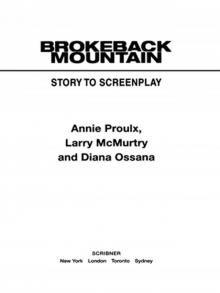 Brokeback Mountain
Brokeback Mountain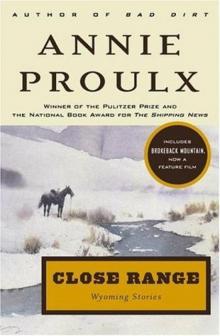 Close Range
Close Range That Old Ace in the Hole
That Old Ace in the Hole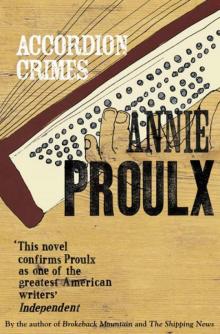 Accordion Crimes
Accordion Crimes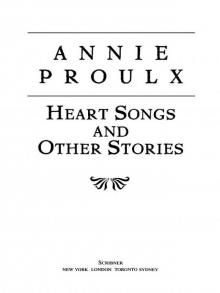 Heart Songs and Other Stories
Heart Songs and Other Stories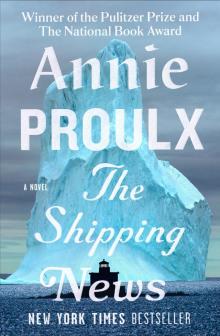 The Shipping News
The Shipping News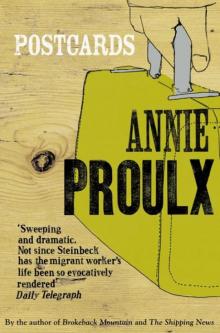 Postcards
Postcards Bird Cloud
Bird Cloud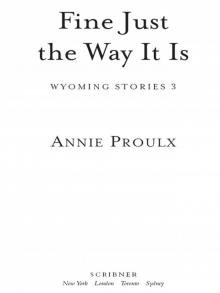 Fine Just the Way It Is
Fine Just the Way It Is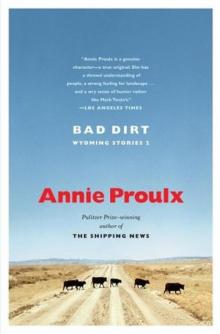 Bad Dirt
Bad Dirt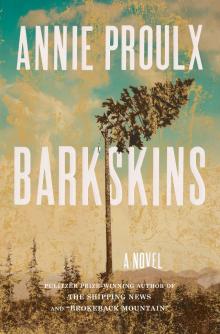 Barkskins
Barkskins BrokebackMountain
BrokebackMountain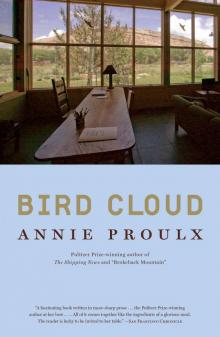 Bird Cloud: A Memoir of Place
Bird Cloud: A Memoir of Place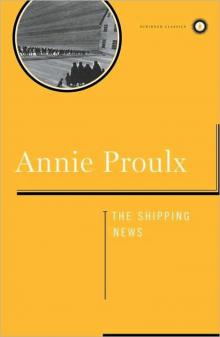 Shipping News_A Novel
Shipping News_A Novel